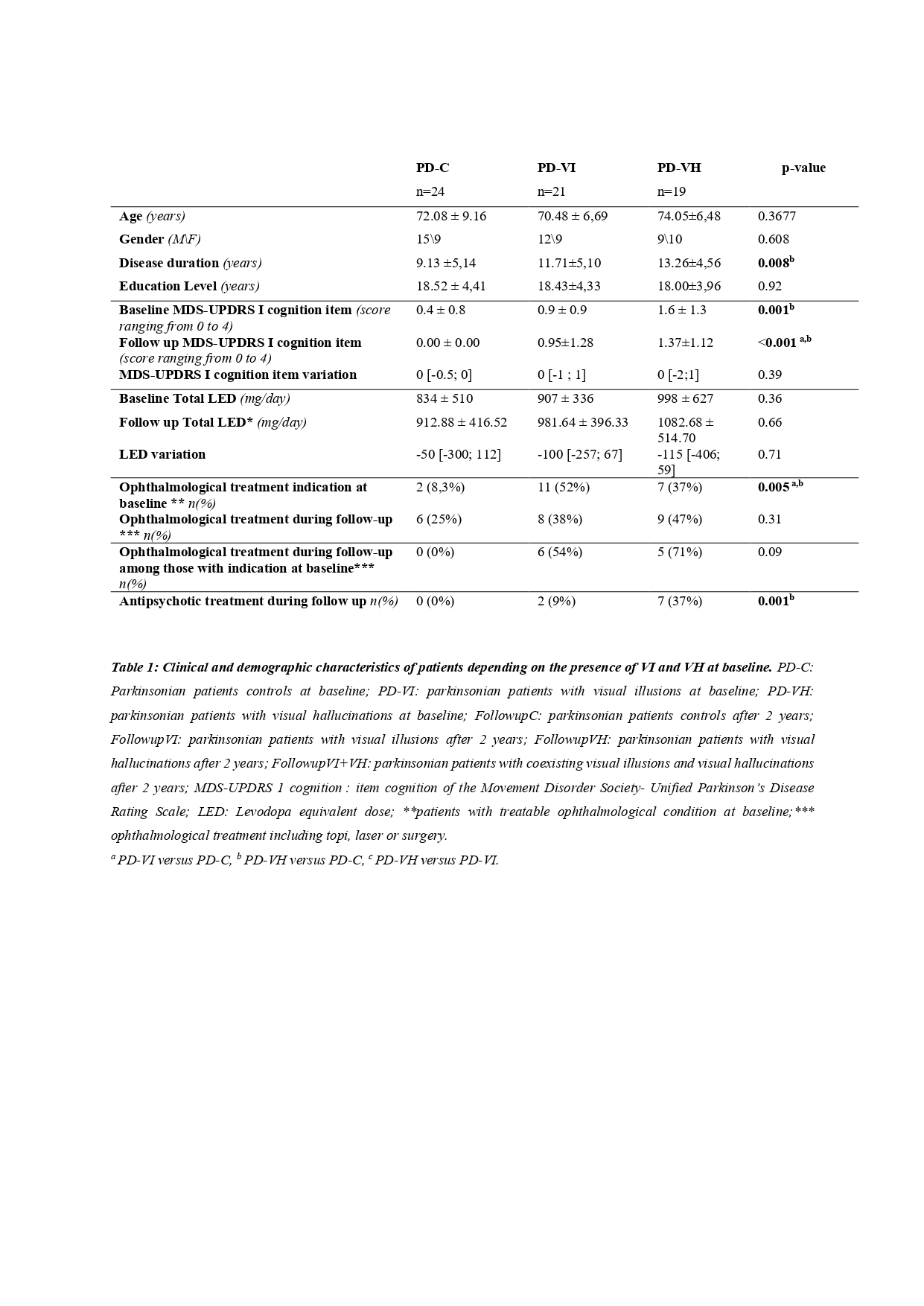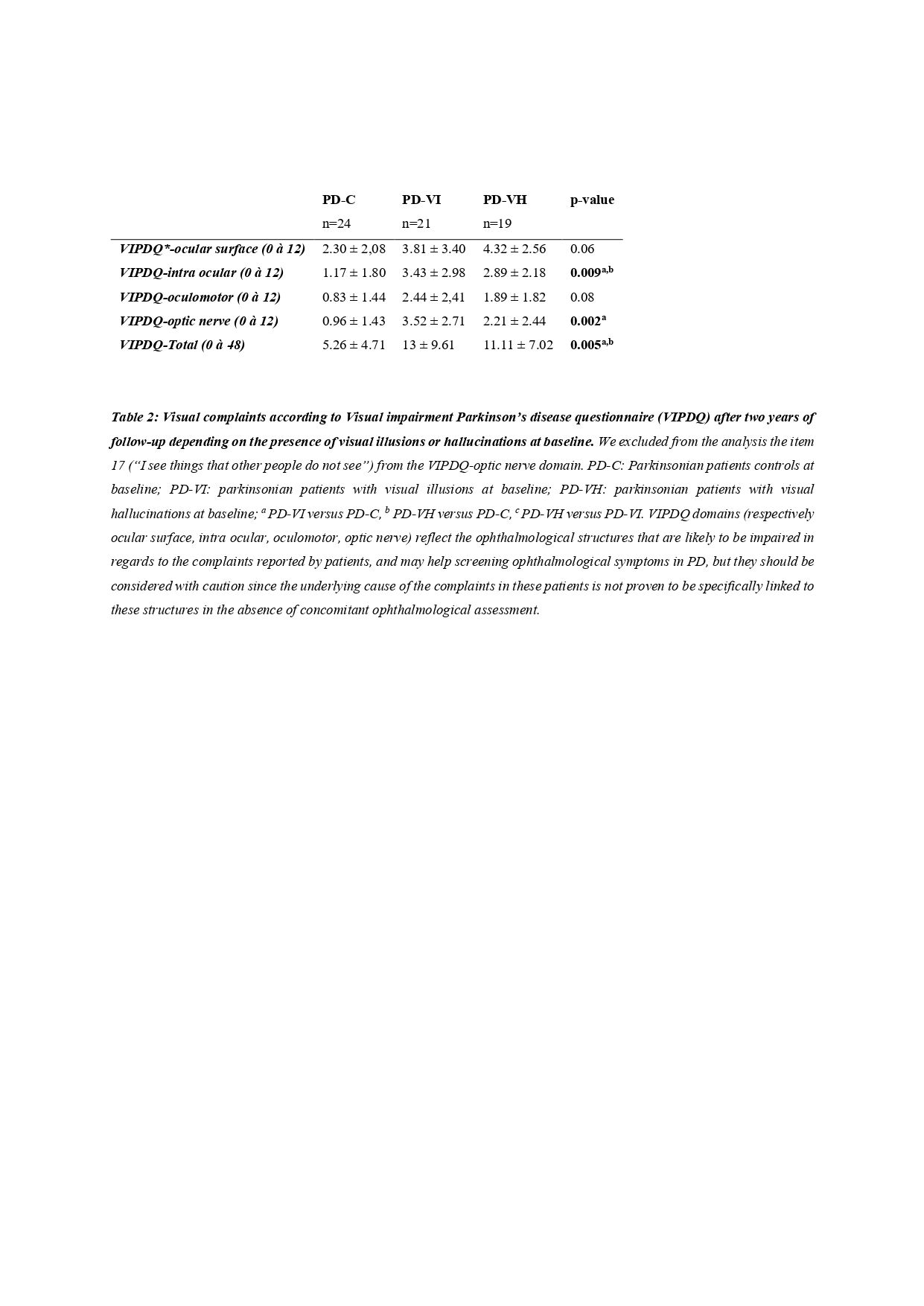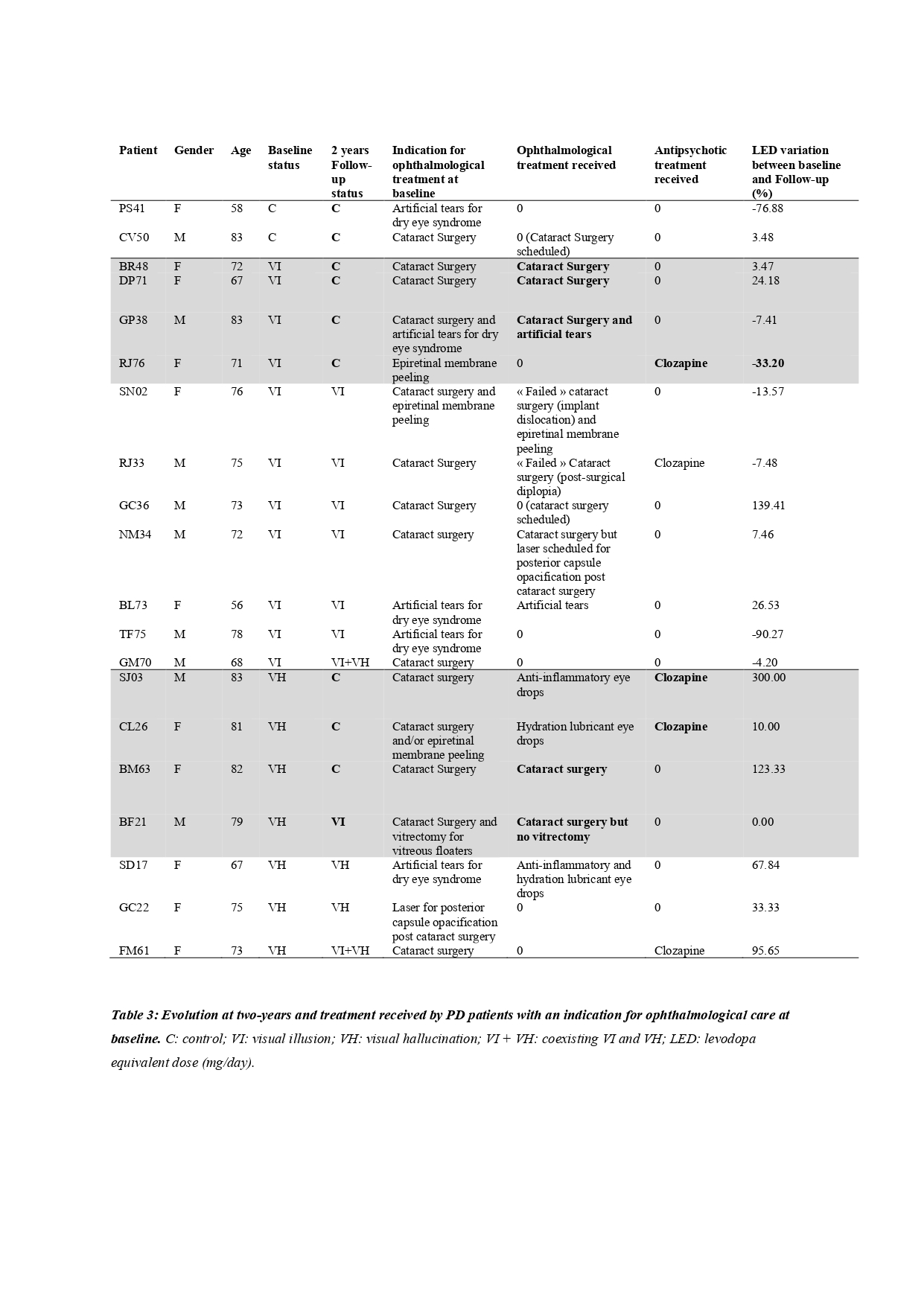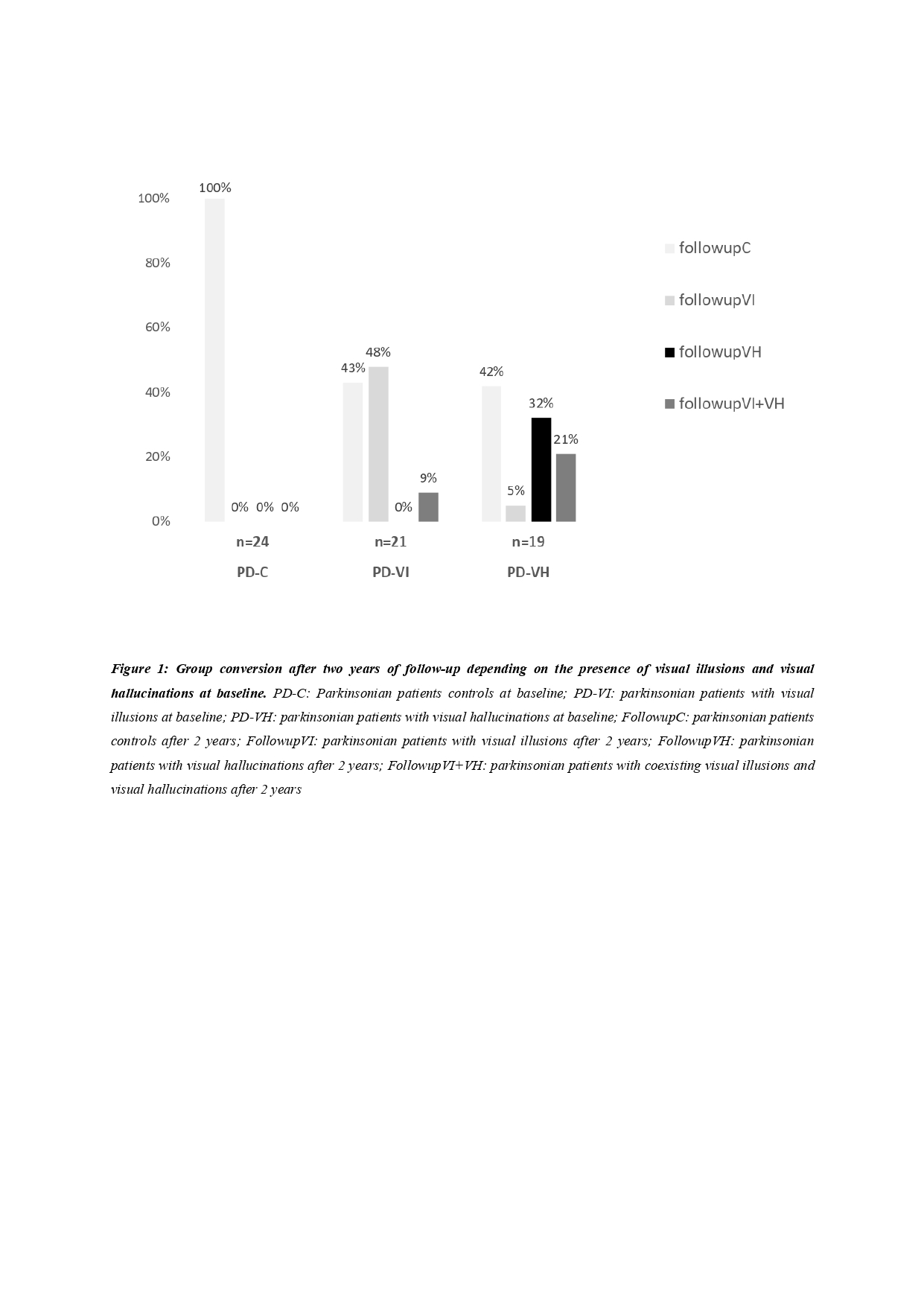Category: Parkinson's Disease: Non-Motor Symptoms
Objective: To determine whether visual illusions (VI) evolve towards visual hallucinations (VH) along the time in Parkinson’s disease (PD), and whether ophthalmological treatment may have a positive effect on the prognosis of those visuo-perceptive manifestations.
Background: Previous longitudinal studies assessing visual hallucinations in PD have not specifically addressed the question of the respective evolution of VI and VH,[1,2] neither did they assess the role of ocular pathology on the evolution of those manifestations.
Method: PD patients from a previous cohort (PD with VI (n=26), PD with VH (n=28), and PD without VI or VH (n=28)) were contacted two years later and questioned regarding the current presence of VI or VH using the SCOPA-PC.[3] A clinical ophthalmological examination was performed at baseline in order to identify patients with an indication for ophthalmological treatment, and current visual complaints were screened at follow-up using the VIPD-Q.[4] We also noted whether patients received an ophthalmological treatment, or antipsychotic treatment during the two-year interval.
Results: Clinical and demographic characteristics of patients depending on the presence of VI and VH at baseline are presented in Table 1. Among PD-VI patients, 43% normalized, 48% remained PD-VI, 9% evolved towards coexisting VI and VH, and none converted to pure VH. Among PD-VH patients, 42% normalized, 32% remained PD-VH, 21% evolved towards coexisting VI and VH, and only 5% converted to pure VI (Figure 1). At follow-up, visual complaints remained greater among PD-VI and PD-VH compared to controls (p=0.005) (Table 2). Treatments received by patients with an indication for ophthalmological treatment at baseline, not only ophthalmological care but also antipsychotic treatment or dopa-therapy adjustment, during the follow-up interval as well as their status evolution are presented in Table 3. Among PD-VI and PD-VH with an indication for ophthalmological treatment at baseline, in most cases performing cataract surgery when indicated, could lead to resolution of VI or VH.
Conclusion: PD Patients with VI do not necessarily evolve towards VH over time, and ophthalmological treatment may have a positive effect on the prognosis of those visuo-perceptive manifestations in PD similar to antipsychotic treatment and dopatherapy adjustment.
References: 1. Marques A, Beze S, Pereira B, et al (2020) Visual hallucinations and illusions in Parkinson’s disease: the role of ocular pathology. J Neurol. https://doi.org/10.1007/s00415-020-09925-x
1. de Maindreville AD, Fénelon G, Mahieux F (2005) Hallucinations in Parkinson’s disease: a follow-up study. Mov Disord 20:212–217. https://doi.org/10.1002/mds.20263
2. Goetz CG, Leurgans S, Pappert EJ, et al (2001) Prospective longitudinal assessment of hallucinations in Parkinson’s disease. Neurology 57:2078–2082. https://doi.org/10.1212/wnl.57.11.2078
3. Visser M, Verbaan D, van Rooden SM, et al (2007) Assessment of psychiatric complications in Parkinson’s disease: The SCOPA-PC. Mov Disord 22:2221–2228. https://doi.org/10.1002/mds.21696
4. Borm CDJM, Visser F, Werkmann M, et al (2020) Seeing ophthalmologic problems in Parkinson disease: Results of a visual impairment questionnaire. Neurology 94:e1539–e1547. https://doi.org/10.1212/WNL.0000000000009214
To cite this abstract in AMA style:
S. Beze, L. Castellani, B. Pereira, F. Chiambaretta, F. Durif, A. Marques. TWO-YEAR LONGITUDINAL FOLLOW-UP OF VISUAL ILLUSIONS AND HALLUCINATIONS IN PARKINSON’S DISEASE [abstract]. Mov Disord. 2022; 37 (suppl 2). https://www.mdsabstracts.org/abstract/two-year-longitudinal-follow-up-of-visual-illusions-and-hallucinations-in-parkinsons-disease/. Accessed December 23, 2025.« Back to 2022 International Congress
MDS Abstracts - https://www.mdsabstracts.org/abstract/two-year-longitudinal-follow-up-of-visual-illusions-and-hallucinations-in-parkinsons-disease/




